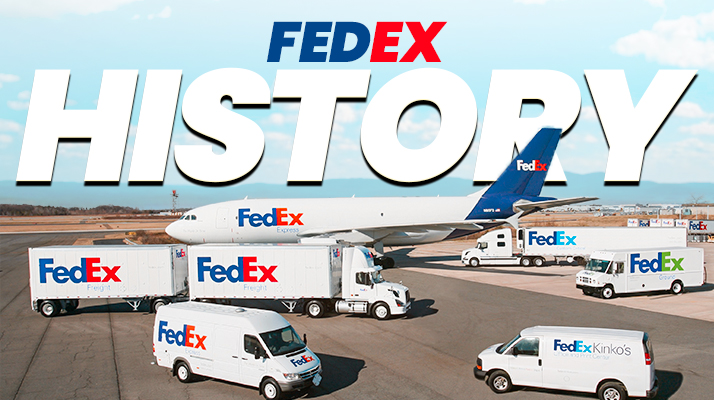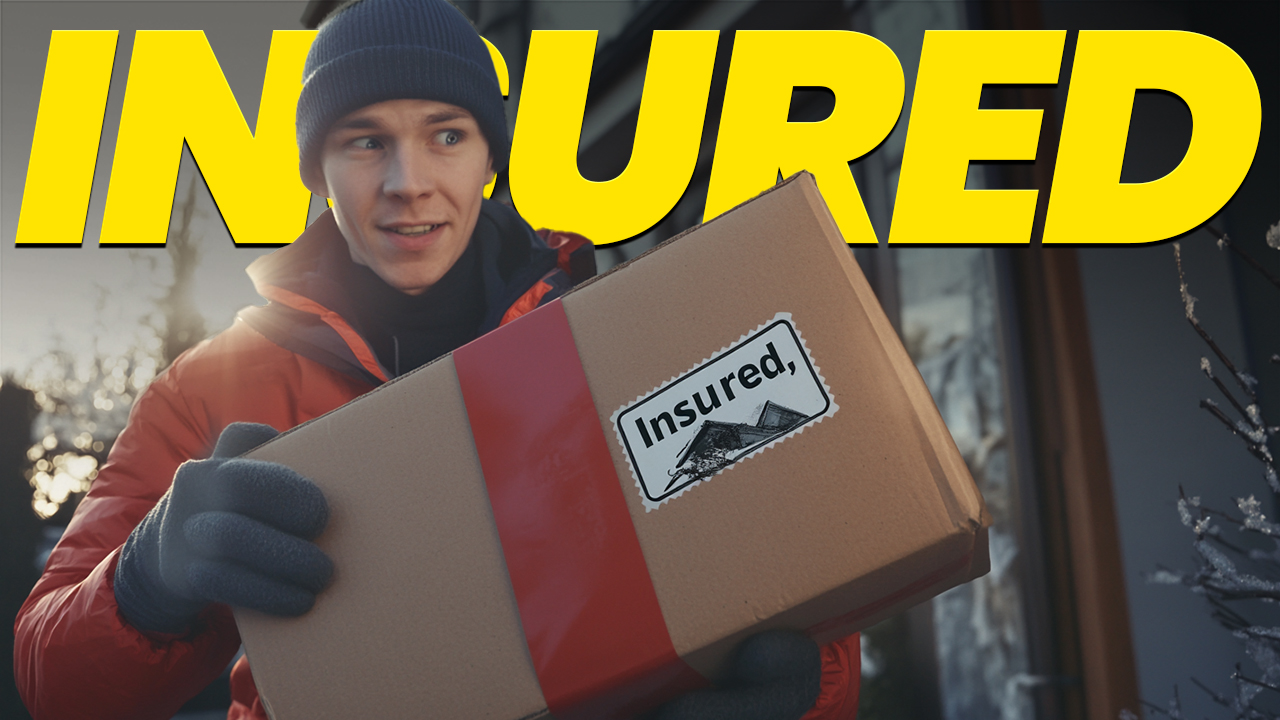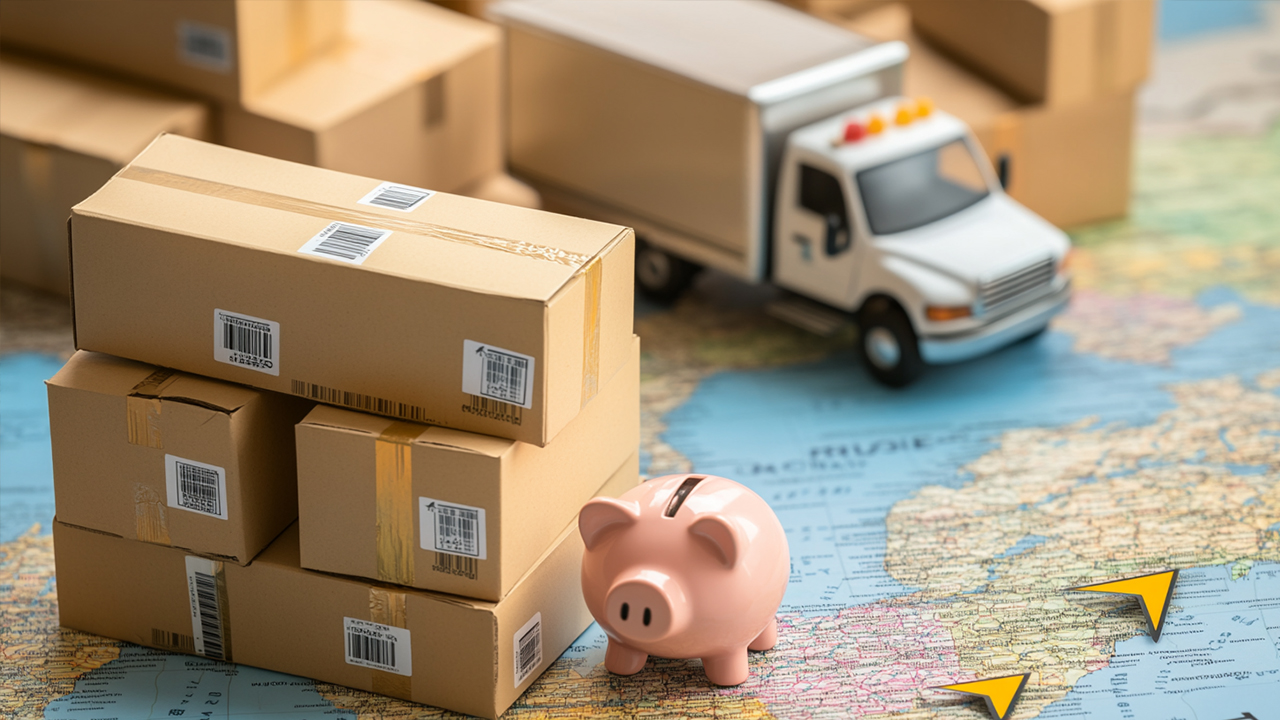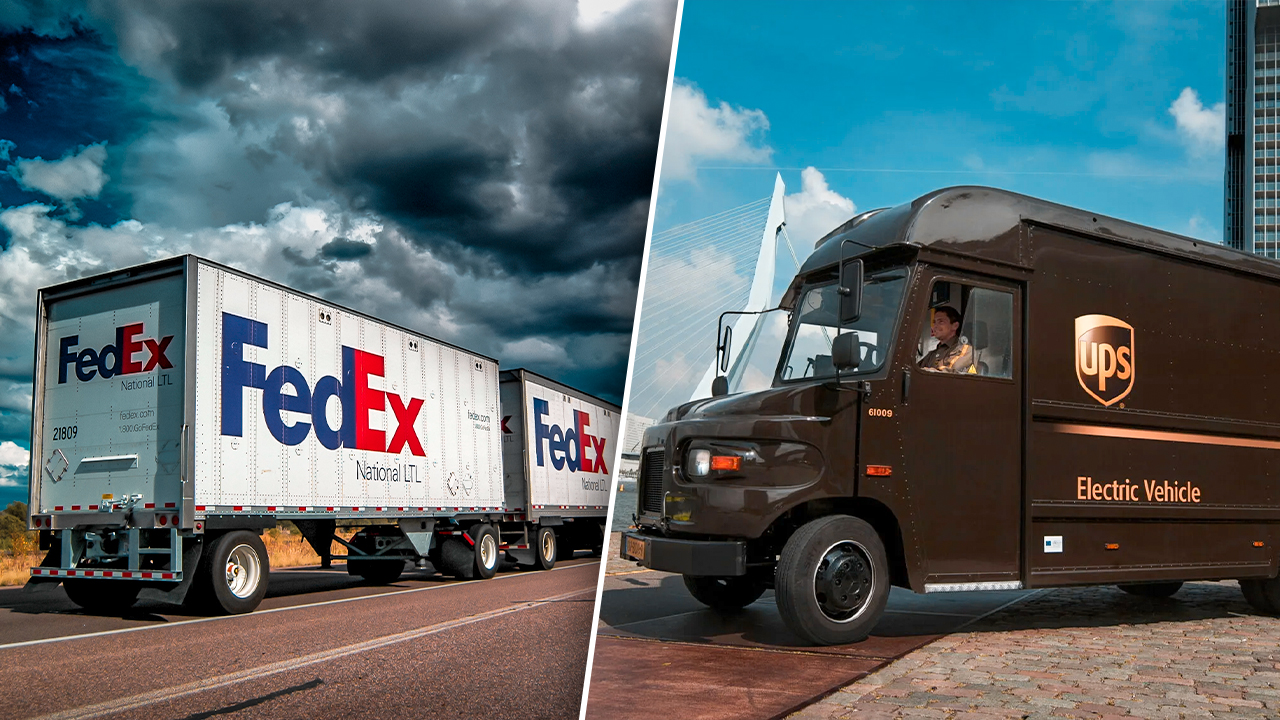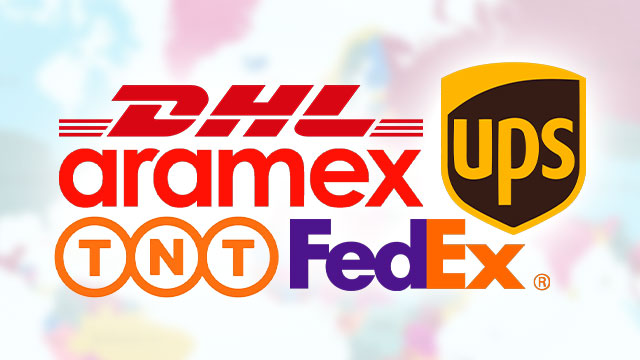Will Drone Package Delivery Ever Be A reality
What Are the Benefits of Drone Package Delivery?
- Faster Delivery Times
- Cost Savings
- Reduced Carbon Emissions
What Are the Challenges of Drone Package Delivery?
- Limited Range and Payload Capacity
- Airspace Regulations
- Weather Conditions
What Companies Are Currently Using Drone Package Delivery?
- Amazon Prime Air
- UPS Flight Forward
- DHL Parcelcopter
What Are the Safety Concerns of Drone Package Delivery?
- Potential for Accidents and Collisions
- Privacy Concerns
- Hacking and Security Risks
What Are the Future Possibilities for Drone Package Delivery?
- Urban Air Mobility
- Autonomous Delivery Vehicles
- Integration with Other Technologies
The concept of drone package delivery is rapidly gaining traction, sparking excitement and curiosity about its potential to revolutionize logistics.
This innovative approach promises faster delivery times, cost savings, and a reduced carbon footprint.
It also faces hurdles such as regulatory challenges, safety concerns, and technological limitations.
We will explore how drone delivery works, its benefits and challenges, current players in the market, and what the future may hold for this aerial revolution.
Get ready to uncover the fascinating world of drone package delivery!
1. What is Drone Package Delivery?
Drone package delivery refers to the innovative logistics solution where autonomous drones are utilized to transport packages from one location to another, fundamentally altering the landscape of last-mile delivery. This delivery method promises to enhance delivery efficiency, reduce transportation costs, and meet rising consumer expectations for quicker service while providing unprecedented delivery accessibility, particularly in urban settings. As technology advances, the potential for drones to navigate urban freight environments becomes increasingly feasible, making this delivery option not just a future possibility, but a growing reality.2. How Does Drone Package Delivery Work?
Drone package delivery operates through a sophisticated framework that combines advanced drone technology, optimized delivery logistics, and strict adherence to FAA regulations to ensure a seamless operation from the warehouse to the consumer's doorstep. Autonomous drones are equipped with GPS and AI systems to assess delivery zones, enabling them to navigate through urban environments while minimizing traffic congestion and optimizing delivery timeframes. A remote pilot may oversee operations to manage any unexpected challenges, ensuring public safety and compliance.3. What Are the Benefits of Drone Package Delivery and Same-Day Delivery?
The adoption of drone package delivery presents numerous benefits that can transform the logistics landscape, including enhanced delivery efficiency, the potential for same-day delivery, and significant reductions in delivery costs. Utilizing autonomous drones not only expedites the final mile delivery process, but also minimizes the environmental impact associated with traditional delivery vehicles, contributing to reduced carbon emissions. As logistics companies strive to meet growing consumer demand for faster and more reliable delivery options, drone technology proves to be a game-changing solution.Faster Delivery Times
One of the primary advantages of drone package delivery is the ability to achieve faster delivery times, particularly in the last-mile delivery segment, where traditional methods often encounter delays due to traffic congestion and logistical challenges.This innovation not only minimizes waiting periods for consumers but also enhances overall efficiency within the logistics framework.
- For instance, a leading logistics company conducted a trial in urban areas and noted a reduction in delivery times by 70%, showcasing how drones can navigate crowded streets effortlessly.
- Another case study involved a major retailer that utilized drones for same-day delivery. Customers reported higher satisfaction levels, as they received their orders promptly without the usual interruptions caused by traffic.
As these real-world examples illustrate, adopting drone technology can revolutionize delivery methods and significantly boost consumer satisfaction, making it a valuable asset in the competitive logistics market.
Cost Savings and Delivery Costs
Drone package delivery is poised to generate substantial cost savings for logistics companies by reducing transportation costs and improving overall delivery efficiency.In contrast to traditional delivery methods, which often rely on fuel-hungry trucks and a significant labor force, the advent of drones introduces a more economical alternative.
These unmanned aerial vehicles reduce fuel consumption significantly, as their electric propulsion systems are designed for optimal energy efficiency. Companies like Amazon and Zipline have reported impressive reductions in their delivery costs. Amazon, for instance, boasts that drone technology can slash operational expenses by up to 50% compared to conventional vehicles.
- Lower fuel costs due to direct flight paths.
- Reduction of delivery personnel needed, thus saving on labor expenses.
The faster delivery times not only enhance customer satisfaction but also allow for more deliveries per day, maximizing profits effectively.
Reduced Carbon Emissions
Utilizing drones for package delivery offers the significant advantage of reduced carbon emissions, making it a more environmentally friendly delivery method compared to conventional logistics operations.This innovative approach not only streamlines the delivery process but also minimizes the reliance on fuel-consuming vehicles that contribute heavily to air pollution. Drones can navigate directly to their destinations, thereby reducing travel distances and times, which enhances overall efficiency.
The use of electric drones can lead to a substantial decrease in greenhouse gas emissions when compared to traditional delivery trucks, which are often tied to carbon-intensive fuel sources.
- By adopting drone technology, logistics companies can attract environmentally conscious consumers.
- They have the opportunity to position themselves as leaders in sustainability.
The responsibility lies with these companies to implement greener delivery methods proactively, ensuring that they not only meet consumer demands but also contribute positively to global efforts aimed at combating climate change.
4. What Are the Challenges of Drone Package Delivery and Weather Conditions?
Despite the promising advantages of drone package delivery, there are several challenges that must be addressed to ensure its successful implementation, including regulatory compliance with FAA regulations, weather conditions, and public safety concerns.Limited Range and Payload Capacity
One significant challenge of drone package delivery is the limited range and payload capacity that restricts the distance drones can travel and the weight of the packages they can carry.This limitation dramatically impacts logistics operations, particularly in areas with diverse geographical challenges. For instance, a logistics company hoping to reach customers in rural or mountainous regions must grapple with the fact that typical drones can only transport small packages over short distances.
Innovations in drone technology are paving the way for solutions that address these restrictions.
- Some companies are developing hybrid drones that combine vertical takeoff capabilities with longer flight ranges.
- Others are creating drone delivery hubs to facilitate a network of smaller drones making short hops to cover ground efficiently.
- Partnerships with regional delivery services are being explored to cover last-mile logistics more effectively.
By tackling these challenges creatively, logistics companies aim to make drone delivery a viable option across various delivery zones.
Airspace Regulations and FAA Regulations
Airspace regulations present another major hurdle for the drone industry, as compliance with FAA regulations is essential for ensuring public safety and operational legality.
These regulations are not just a set of rules but a comprehensive framework designed to manage the complexities of an increasingly crowded airspace. Businesses aiming to engage in drone package delivery must navigate these guidelines while striving for innovation. Although the regulatory environment can be stifling, many companies are not merely accepting it; instead, they are actively collaborating with regulators.
- By participating in public discussions,
- submitting requests for exemptions,
- and sharing safety data,
these organizations aim to advocate for reform that can promote not only safety but also the advancement of drone technology. The ultimate goal is to establish a balanced approach that facilitates growth while addressing the critical concerns of airspace management.
Weather Conditions
Weather conditions can significantly impact the effectiveness of drone applications, posing challenges for reliable package deliveries in adverse weather scenarios.
Each element of the weather, from torrential rain to gusty winds and dense fog, not only disrupts flight paths but also heightens safety risks.
The ability of drones to navigate these conditions is critical for logistics companies striving to maintain efficiency. To mitigate these challenges, companies are increasingly investing in advanced drone technology, featuring better sensors and enhanced stabilization systems. Operational adjustments, such as optimizing delivery routes and timing flights during favorable weather windows, are becoming standard practices.
- Upgraded navigation systems help drones adapt to environmental shifts.
- Real-time weather data integration allows for well-considered choices.
- Training pilots to understand weather impacts improves safety.
5. What Companies Are Currently Using Drone Package Delivery, Including Amazon Prime Air?
Several prominent companies are currently leveraging drone package delivery as part of their logistics strategy, including industry leaders like Amazon Prime Air, UPS, and Alphabet, all of which are pioneering innovative commercial operations that integrate this cutting-edge technology.Amazon Prime Air
Amazon is leading the way in drone deliveries Prime Air is at the forefront of the drone deliveries and the drone delivery revolution and consumer delivery, aiming to provide customers with their purchases within 30 minutes using autonomous drones, subject to FAA regulations and FAA drone rules that govern commercial drone operations.As this innovative service takes shape, it faces various technological advancements and logistical hurdles. The company is leveraging sophisticated algorithms and cutting-edge sensors to navigate complex urban environments safely. Optimizing delivery routes requires a nuanced understanding of customer locations and traffic patterns.
- One significant challenge involves maintaining safety standards.
- Another pertains to the public's perception of drone flights and the challenges of public perception, which can influence regulatory decisions.
With a keen focus on convenience, Amazon continues to adapt its strategy, aligning with changing FAA regulations while addressing community concerns. The future of this service promises not only faster deliveries but also a redefined customer experience.
UPS has made significant strides in integrating drones technology Flight Forward
UPS Flight Forward is another key player in the drone package delivery market, focusing on enhancing delivery logistics and expanding their commercial operations using drone technology for healthcare and medical delivery, particularly in areas like Arizona and California.As a pioneering force in this rapidly evolving sector, the company has implemented a variety of initiatives aimed at improving efficiency and reliability in transporting medical supplies.
- One of their core strategies involves establishing streamlined routes that minimize flight times and ensure prompt delivery.
- Collaboration with healthcare providers allows for real-time tracking and inventory management, which is crucial for saving lives in critical situations.
Despite facing regulatory hurdles, UPS Flight Forward has actively engaged with aviation authorities to ensure compliance while advocating for increased operational freedoms. These efforts not only enhance their operational capabilities but also address pressing healthcare delivery challenges such as regulatory compliance and safety standards, paving the way for a future where drone deliveries become commonplace in the medical field.
DHL Parcelcopter
DHL Parcelcopter represents the company's investment in drone deliveries, providing innovative logistics solutions that enhance delivery options in urban environments.Such advancements are essential as they address the growing demand for faster and more efficient delivery systems, particularly in densely populated areas. By integrating cutting-edge technology, this approach strives to minimize traffic congestion and reduce carbon emissions. The partnership with various local governments and technology providers ensures a collaborative effort to pave the way for regulatory acceptance and operational standardization.
- Enhanced delivery speed through aerial routes.
- Support for e-commerce growth.
- Focus on sustainability and reduced environmental impact.
These efforts collectively illustrate how the Parcelcopter initiative not only benefits the logistics operations of the company but also transforms urban delivery solutions are being developed to meet growing delivery demand landscapes significantly.
6. What Are the Safety Concerns of Drone Package Delivery?
As the drone package delivery industry continues to grow, addressing safety concerns related to public safety, the potential for accidents, and security risks becomes increasingly vital in ensuring the success and acceptance of this technology.Potential for Accidents and Collisions
The potential for accidents and collisions poses a significant concern for drone deliveries, with the need for careful navigation and adherence to safety protocols critical to public safety.Various factors contribute to these incidents.
Technical failures, such as software glitches or hardware malfunctions, can impede a drone's ability to operate safely. Human error remains prevalent, whether it’s due to miscalculations during flight planning or failure to monitor the drone’s status.
To address these issues, the industry has implemented several measures aimed at enhancing safety.
- Regular maintenance schedules
- Comprehensive pilot training programs
- Real-time monitoring systems
These initiatives focus on reducing risks, ensuring that drones navigate safely while delivering goods, thereby fostering public trust in this evolving sector.
Privacy Concerns
Privacy concerns surrounding drone applications have emerged as a significant issue, raising questions about the surveillance capabilities of drones and their impact on public safety and consumer expectations.
As these technologies become increasingly embedded in various industries, they bring forth inevitable challenges that must be addressed to ensure ethical use. The proliferation of aerial devices has ignited debates about the balance between innovation, security, and individual rights, leading many to question how effectively companies manage their data collection practices.
- Transparency in operations is crucial for companies seeking to build trust.
- Clear communication about how data is collected, stored, and utilized can alleviate public concerns.
- Implementing robust security measures to protect collected information is equally essential.
In this landscape, businesses should also consider engaging with communities to understand their perspectives, ultimately creating a dialogue that fosters mutual respect and understanding.
Hacking and Security Risks
Hacking and security risks present a serious threat to the drone package delivery industry, necessitating robust measures to safeguard against unauthorized access and potential misuse of drone technology.As the reliance on drones for logistics and delivery continues to grow, the implications of security breaches have become more pronounced. Companies operating in this sector face not only the challenge of protecting their fleets but also the critical responsibility of ensuring public safety.
- Concerns over unauthorized surveillance.
- The potential for physical harm through hijacked drones.
- Data breaches leading to theft of sensitive information.
To combat these threats, organizations are investing heavily in advanced encryption techniques, regular software updates, and rigorous training for personnel. By employing strategies such as multi-factor authentication and incorporating AI-driven monitoring systems, firms aim to bolster their defenses. Ultimately, the focus remains on creating a safe environment where technology can flourish without compromising the trust of the public.
7. What Are the Future Possibilities for Drone Package Delivery?
The future possibilities for drone package delivery are expansive, with innovations poised to revolutionize urban air mobility and the development of autonomous delivery vehicles, fundamentally altering how delivery logistics are managed.Urban Air Mobility
Urban air mobility represents a significant advancement in drone innovation continues to drive advancements in logistics, aiming to integrate drone package deliveries into the urban transportation infrastructure for improved delivery efficiency.As cities continue to grow and traffic congestion increases, the quest for effective logistical solutions becomes paramount. Urban air mobility could revolutionize the way goods are transported, providing a speedy and efficient method for distributing packages right to consumers' doorsteps.
This new technology holds the promise of reducing delivery times and minimizing the carbon footprint associated with traditional ground transport.
- Enhanced accessibility for remote areas within urban environments.
- Potential reduction in vehicle traffic, thereby improving air quality.
- Increased operational efficiency for businesses relying on prompt deliveries.
These advancements can lead to more innovative applications beyond package delivery, ultimately reshaping the logistics landscape in metropolitan regions.
Autonomous Delivery Vehicles
The development of autonomous delivery vehicles is set to complement drone technology, broadening the scope of delivery methods available to logistics companies and enhancing overall delivery capabilities.This fusion of two cutting-edge technologies promises to revolutionize the logistics sector by enabling a seamless flow of goods from warehouses to end consumers. By leveraging the strengths of both autonomous vehicles are becoming increasingly relevant in logistics and drones, companies can ensure efficient last-mile delivery and tackle challenges related to urban congestion.
- Automated routes can be planned for ground vehicles while drones handle aerial deliveries to hard-to-reach areas.
- Real-time tracking systems will enhance transparency, assuring customers of timely arrivals.
- Significant hurdles remain, including regulatory compliance and the need for advanced infrastructure to integrate these systems effectively.
As logistics stakeholders begin to explore these integrations, the potential for reduced delivery times and operational costs makes this a compelling avenue worth pursuing.
Integration with Other Technologies
The integration of drone technology with other emerging technologies, such as AI and IoT, holds the potential to enhance the consumer delivery experience and optimize logistics operations. This synergy not only promises faster delivery times but also contributes to reducing operational costs.Logistics companies are rapidly adapting to the needs of consumers who demand quick and efficient service. By utilizing drones alongside:
- Artificial Intelligence: This technology helps in route optimization, ensuring that delivery paths are the shortest and most efficient.
- Internet of Things: IoT devices facilitate real-time tracking of shipments, offering customers updates about their orders and the exact location of their delivery.
Integrating these technologies allows for predictive analytics, helping companies anticipate demand spikes and adjust their resources accordingly. This forward-thinking approach not only satisfies consumer expectations but also enhances overall operational efficiencies.

